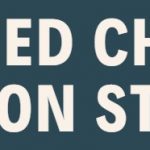When I went into university and when I first began this course, I wanted to study marine biology because I enjoyed going to the Vancouver Aquarium as a child and teen. This course opened up my understanding of ocean conservation and the different issues and areas that I can engage with. It surprises me how my understanding of ocean conservation could change so much in just 3 months. I used to only be interested in the ocean because of all the charismatic animals. Now, I realized that not only are the animals amazing, but the animals, ecosystem, and communities are affected by bottom trawling, overfishing, and many other fishery issues.
One thing that I would like to add to my previous assignments would be adding in more critiques. Instead of simply reporting on different issues and topics that were required for the assignments, I want to include my personal critiques of the issues since I have a better understanding of the topics now. I could also incorporate more information on how different assignments and fishery topics are related to each other. For example, for the species story project, I could add more information about how wolf-eels interact with other organisms in BC and mention how Indigenous communities used to eat wolf-eels as well (Kuhnlein & Humphries, n.d.). For our first blog on current marine conservation issues, I wrote about blast fishing, but I can now incorporate more information on what specific species of fish are affected and what fish the local community in Indonesia relies on for income. I mentioned how bottom trawlers were affecting the small-scale fishers, but I can do more research on bottom trawling in Indonesia as well.
This e-portfolio shows my critical thinking because for the current news item assignment, I discussed my critiques and considerations of the concept of dynamic MPAs. It was interesting to learn that the lead author of the paper is funded by fishery companies, so he offers biased opinions. After learning about that, I have been more critical in the research and studies that I have been reading. I have also noticed that scientific articles that praise fisheries tend to include the lead author of the dynamic MPAs paper, which makes me question the validity of the mentioned papers. The reflections in my e-portfolio also shows critical thinking because instead of simply recounting my experiences, I am making connections to past experiences and how I can grow moving forward. The policy brief also shows my critical thinking because I applied my learning on COSEWIC and the Species At Risk Act and looked at the status of Chinook salmon. I considered the current situation and came up with recommendations that considered social, economic, and environmental factors.
One of the skills that I gained during this course is creating a blog. I have always wanted to create a photo blog website, but I never spent time developing it. I learned a lot about creating this blog on WordPress and it will be a useful portfolio to show employers of writing, animation skill, and passion for marine conservation. Another skill that I learned through this course is distilling and communicating information in different formats (ex. Twitter, species story video, short presentations). Coming up with tweets has been an interesting process because you want to make sure you get the message across within 280 characters while ensuring all of the necessary information is included. I have always been interested in marketing and communication, so getting practice on condensing information and presenting them in short and visual ways has been an enjoyable process. It is becoming increasingly important to present and communicate science in understandable ways, so people can take action. I hope to continue developing these skills and hopefully using them in my future career.
An area of improvement would be my writing skills. I tend to write like I am talking, but I hope to improve that by reading more and learning different writing styles. I have also been reading my assignments aloud more often to catch different mistakes, but this is something I need to continue working on.
In my e-portfolio, I tried to include as many pictures as possible to make the blog more engaging. Moreover, I enjoy photography, so I tried to include personal photos that I have taken during the field trips and on my other excursions near the water.
I put a lot of time and effort in the course, especially near the start of the semester, but as the semester went on, with class work and job applications, I spent less time on my assignments. My e-portfolio reflects my work because I started out with an animated species story which I spent a lot of time drawing and animating, but I wish I did more art, video, and multimedia pieces for my other assignments near the end of the course. Even though I was able to carry out the message that I wanted in my written assignments, it would have been a good opportunity to test my creativity and to step out of my comfort zone if I had used other formats.
References
Kuhnlein, H. V., & Humphries, M. M. (n.d.). Wolf-eel. Traditional Animal Foods of Indigenous Peoples of Northern North America. Retrieved April 13, 2022, from http://traditionalanimalfoods.org/fish/saltwater/page.aspx?id=6443


